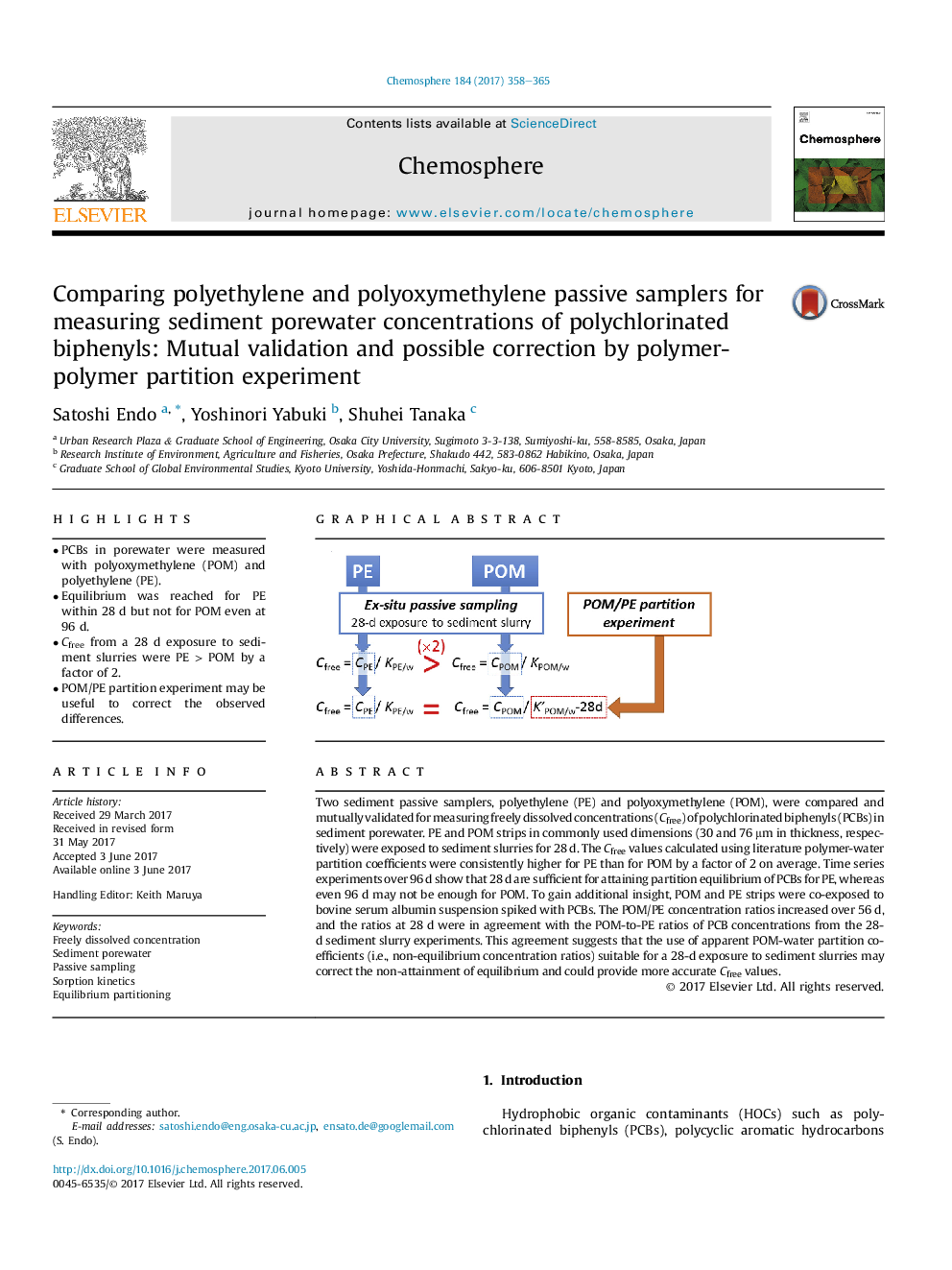| Article ID | Journal | Published Year | Pages | File Type |
|---|---|---|---|---|
| 5746194 | Chemosphere | 2017 | 8 Pages |
â¢PCBs in porewater were measured with polyoxymethylene (POM) and polyethylene (PE).â¢Equilibrium was reached for PE within 28 d but not for POM even at 96 d.â¢Cfree from a 28 d exposure to sediment slurries were PE > POM by a factor of 2.â¢POM/PE partition experiment may be useful to correct the observed differences.
Two sediment passive samplers, polyethylene (PE) and polyoxymethylene (POM), were compared and mutually validated for measuring freely dissolved concentrations (Cfree) of polychlorinated biphenyls (PCBs) in sediment porewater. PE and POM strips in commonly used dimensions (30 and 76 μm in thickness, respectively) were exposed to sediment slurries for 28 d. The Cfree values calculated using literature polymer-water partition coefficients were consistently higher for PE than for POM by a factor of 2 on average. Time series experiments over 96 d show that 28 d are sufficient for attaining partition equilibrium of PCBs for PE, whereas even 96 d may not be enough for POM. To gain additional insight, POM and PE strips were co-exposed to bovine serum albumin suspension spiked with PCBs. The POM/PE concentration ratios increased over 56 d, and the ratios at 28 d were in agreement with the POM-to-PE ratios of PCB concentrations from the 28-d sediment slurry experiments. This agreement suggests that the use of apparent POM-water partition coefficients (i.e., non-equilibrium concentration ratios) suitable for a 28-d exposure to sediment slurries may correct the non-attainment of equilibrium and could provide more accurate Cfree values.
Graphical abstractDownload high-res image (250KB)Download full-size image
